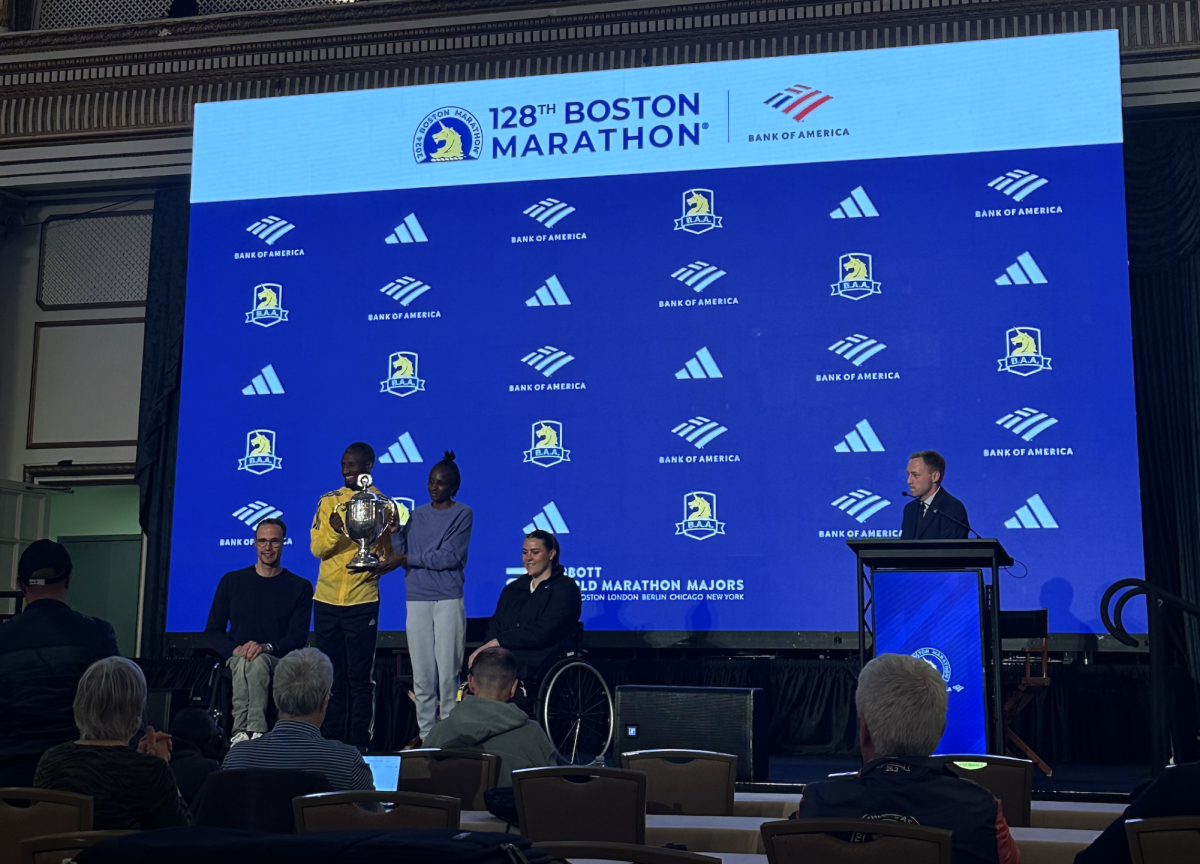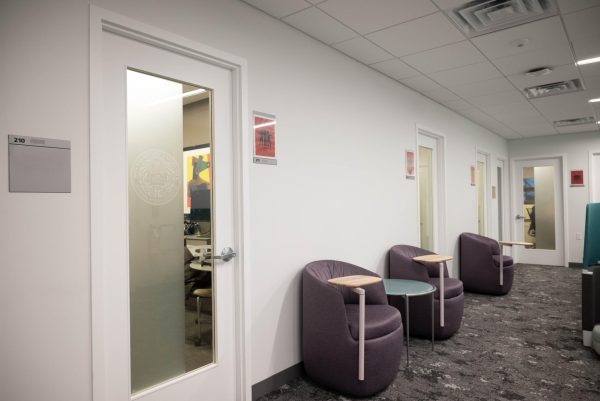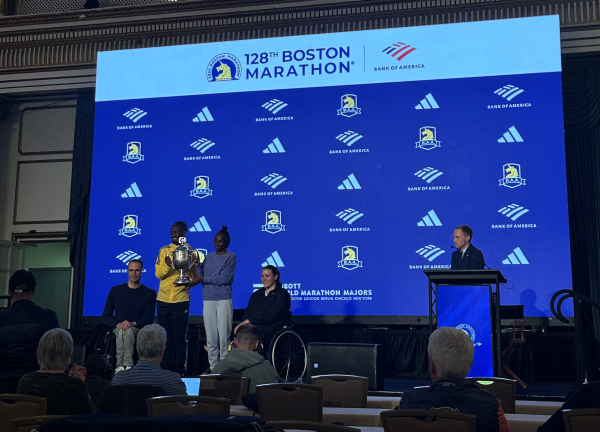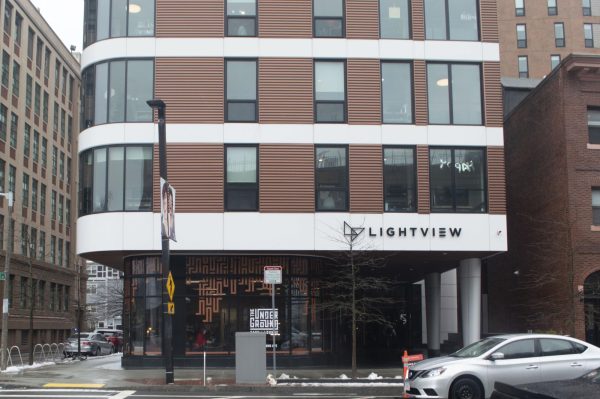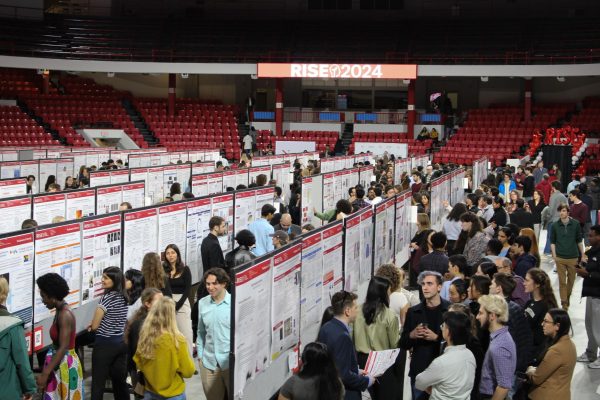Boston’s rich jazz history gives way to bright future
Boston has a rich history in jazz, and there are continuous efforts to foster racial inclusivity and diversity within the music genre today.
March 2, 2022
Boston is well-known for the pivotal role it played in early U.S. history, its delicious seafood and its popular sports teams like the Red Sox and the Bruins. Less frequently is the city recognized for its jazz scene. But during the twentieth century, and especially during the peak of jazz in the 1950s and 60s, big names from the genre like Duke Ellington and William James “Count” Baise paid frequent visits to local venues.
The South End is central to Boston’s jazz culture. In the 1950s this neighborhood housed almost a quarter of the city’s total Black population, highlighting the enduring connection between jazz and African American culture. Some of the most popular clubs included the Hi-Hat, Savoy Cafe and Wally’s Cafe. Of these three, Wally’s is the only one that continues to host performances although it is currently closed due to the pandemic.
“Just around the corner from Northeastern is Wally’s Cafe, which dates from 1947 and was founded by Joseph L. Walcott, an immigrant from Barbados,” said Francesca Inglese, a professor of cultures, societies and global studies at Northeastern.
Wally’s continues to play an important role in the modern jazz scene in Boston. Local musicians cite it as an important spot for meeting and networking with fellow performers and witnessing talent.
“Wally’s Jazz Cafe … is a historical breeding ground for jazz musicians in Boston, a lot of jazz musicians go there to connect,” said Zachary Richmond, a fifth-year music industry major at Northeastern and an active participant in the NEU Jazz Ensemble.
The largely unrecognized and underground nature of Boston’s jazz scene is brought to light by the brief periods many artists spent in the city. There are a number of renowned musical colleges in the area that acted as magnets for talented artists who performed locally while pursuing their education.
“Boston was a center of music education which produced musicians, but also composers and arrangers who entered into the popular music scene. There was the Newport Jazz Festival, Berklee College of Music and New England and Boston Conservatories,” Inglese said.
Jazz musicians such as pianist Cecil Taylor, popular in the late twentieth century, and Jacky Terrason, another piano player who continues to produce albums, came to Boston pursuing an education in music. But following the path of many artists, they moved onto larger hubs like New York or Los Angeles after graduation.
Boston’s educational institutions not only attracted talented students, but many of their faculty found success performing in and around Boston.
“When you’re a musician going from gig to gig, the steadiness of the work isn’t necessarily there, so when you have a place like Boston, where the cost of living is lower, you have colleges which musicians can be fortunate enough to teach at, you can definitely provide job security that doesn’t exist everywhere,” said Junauro Landgrebe, a part-time lecturer at Northeastern as well as the jazz ensemble director, guitar lesson coordinator and a private lesson instructor.
A number of Boston legends such as Jaki Bayard and Alan Dawson arrived in the city to teach during the mid-twentieth century, and in doing so they found success performing. Bayard spent time at the New England Conservatory as a professor of jazz music and Dawson, a Berklee College faculty member for almost two decades during the mid-twentieth century, had a very successful career as a jazz drummer.
Many talented Black musicians were able to secure stable teaching positions in the 1940s and 1950s, a time when much of the nation’s higher educational institutions remained segregated. This highlights jazz’s racially inclusive nature, fostering collaboration prior to any federal civil rights legislation.
Modern jazz continues to have social justice and racial connections. Its performers come from diverse backgrounds and offer each other a highly unique type of support and education.
“I’m playing with Black musicians on a regular basis. It’s very collaborative, and it’s always been like that with jazz music,” Landgrebe said. “[These connections have] brought me closer to some Black culture issues, and while I’m still learning a lot about being an ally, the people and issues I’ve been introduced to through music have really shaped my understanding.”
Today, there are remnants of the Boston jazz scene’s history, but the pandemic has made them hard to find. Wally’s Cafe, although currently closed, hopes to continue welcoming musicians in the future, according to its website. Scullers Jazz Club, The Cantab Lounge and Darryl’s Corner Bar & Kitchen are all open and hosting jazz artists on a regular basis.
“Because of the pandemic, I did not get to interact with the Boston jazz scene … as much as I had hoped during my time as an undergraduate student,” Richmond said.
Jazz music has proven to be a medium best experienced live. For performers, a major part of jazz is experimenting with different sounds and improvising in front of an audience. During the height of the pandemic, amid stay-at-home orders and social distancing, this component became difficult to execute.
“There are a lot fewer clubs than there used to be, especially smaller clubs,” Landgrebe said. “There are a few but those left have been closing because of the pandemic.”
Boston continues, as it did in the 1950s and 1960s, to draw in talent through its various educational institutions focused on music. Universities in the city, including Northeastern and Boston University, offer programs and degrees related to jazz music, further attracting young artists.
The effort to encourage and attract a wide array of jazz musicians to Boston runs through initiatives like the Berklee Institute of Jazz and Gender Justice, founded by jazz drummer Terri Lyne Carrington, are looking to the future of the jazz scene. Its leaders aim to address gender disparity within the historically male-dominated U.S. jazz scene and encourage a more diverse group of individuals to experiment with the genre, according to its website.
Since its launch in 2018, the Institute of Jazz and Gender Justice has focused on providing an education about important female voices in jazz history as well as hosting opportunities like speaker events or concerts to showcase modern voices working toward increased representation in music.
“[The institute] is very exciting and will undoubtedly shape the jazz scene here and make space for more diverse voices in [Boston] jazz,” Inglese said.





